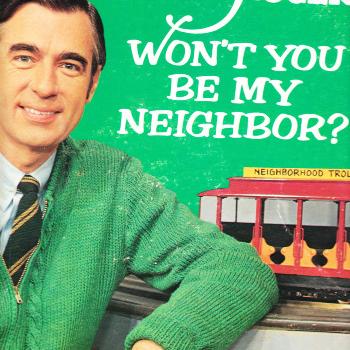JoAnn Wypijewski offers a thought-provoking history lesson, reminding us that whatever we might think about A Handmaid’s Tale as a speculative, dystopian vision of the future, it’s also an accurate reflection of America’s dystopian past:
The mass-culture story of slavery is usually told in terms of economics, labor, color, men. Women outnumbered men in the enslaved population two to one by slavery’s end, but they enter the conventional story mainly under the rubric “family,” or in the cartoon triptych Mammy-Jezebel-Sapphire, or in the figure of Sally Hemmings. Yes, we have come to acknowledge, women were sexually exploited. Yes, many of the founders of this great nation prowled the slave quarters and fathered a nation in the literal as well as figurative sense. Yes, maybe rape was even rampant. That the slave system in the US depended on human beings not just as labor but as reproducible raw material is not part of the story America typically tells itself. That women had a particular currency in this system, prized for their sex or their wombs and often both, and that this uniquely female experience of slavery resonates through history to the present is not generally acknowledged. …
We don’t commonly recognize that American slaveholders supported closing the trans-Atlantic slave trade; that they did so to protect the domestic market, boosting their own nascent breeding operation. Women were the primary focus: their bodies, their “stock,” their reproductive capacity, their issue. Planters advertised for them in the same way as they did for breeding cows or mares, in farm magazines and catalogs. They shared tips with one another on how to get maximum value out of their breeders. They sold or lent enslaved men as studs and were known to lock teenage boys and girls together to mate in a kind of bullpen. They propagated new slaves themselves, and allowed their sons to, and had their physicians exploit female anatomy while working to suppress African midwives’ practice in areas of fertility, contraception and abortion. Reproduction and its control became the planters’ prerogative and profit source.
“People hate those whom they fear,” Susan of Texas wrote recently, “and they fear those whom they have wronged.”
And that, in turn, leads them again to wrong those whom they have wronged. That seems to be the dynamic at work in the current trend of mass incarceration. Melanie Wilmoth Navarro looked at a recent study exploring “The source of American punitiveness“:
Since the 1970s, the prison population in the U.S. has increased by 700%. Consequently, there are now over 2.3 million people behind bars. Friends of Justice believes that this shift toward mass incarceration was driven by a punitive public consensus. This punitiveness resulted in tough-on-crime policies that promote harsh punishment over rehabilitation and leave prisoners locked up and left out.
There are many theories that attempt to explain why the U.S. shifted toward punitive criminal justice policies over the last 40 years. A recent study by Unnever and Cullen (2010) explores the social sources of punitiveness among Americans by examining the efficacy of three prominent theories: the escalating crime-distrust model, the moral decline model, and the racial animus model.
… The results of their research indicate that each theory has some merit. Unnever and Cullen found, as the escalating crime-distrust model suggests, that people who perceive that crime is on the rise are more likely to adopt punitive attitudes. In addition, their results indicate that people who believe that society is in a state of moral decay are more likely to support the death penalty which confirms some of the assumptions of the moral decline model. However, the results of Unnever and Cullen’s research most consistently support the racial-animus model:
A prominent reason for the American public’s punitiveness — including the embrace of mass imprisonment and the death penalty — is the belief that those disproportionately subject to these harsh sanctions are people they do not like: African American offenders.
“The past isn’t dead. It isn’t even past.”












